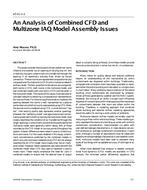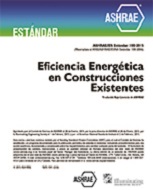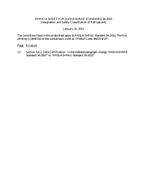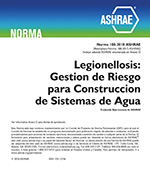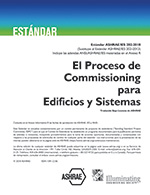Description
This study considers the situation of two isothermal rooms linked to one another via an opening of varying size. Air and a neutrally buoyant contaminant are transferred through the opening in an essentially one-way flow, driven by forced convection. The two rooms are represented computationally by computational fluid dynamics (CFD) and a multizone network airflow model. The four possible combinations are compared: both rooms in CFD, both rooms in the multizone model, and two combined models with one room in CFD and the other in the multizone model. The results of this study illustrate several concepts relevant to selecting a computational representation for room airflows. For the one-way flow situation modeled, the opening between the rooms is well represented by a passive outlet when only the first room is represented using CFD. When the second room is modeled using CFD, a unidirectional “top hat” inlet velocity profile best represents smaller openings. However, the “perfectly mixed” average contaminant concentration predicted in the first room by the multizone model most closely resembles the condition of air transferred through the larger openings. Contaminant concentrations predicted by the multizone model were generally within about 10% of those recorded by the CFD model at various points throughout the system. Greater differences were noted in poorly mixed locations and rooms. For the cases modeled in this study, contaminant concentrations predicted by the combined models in which only one room was modeled using CFD did not always resemble the all-CFD model more closely than the all-multizone model. However, better agreement was obtained with the combined model when CFD was used to represent a poorly mixed room. These results emphasize the need for care in combined models to ensure that the desired level of output detail is actually being achieved, since these models provide more accurate solutions in some, but not all, circumstances.
Units: Dual
Citation: Symposium Papers, Atlanta, GA, 2001
Product Details
- Published:
- 2001
- Number of Pages:
- 12
- File Size:
- 1 file , 420 KB
- Product Code(s):
- D-7148
